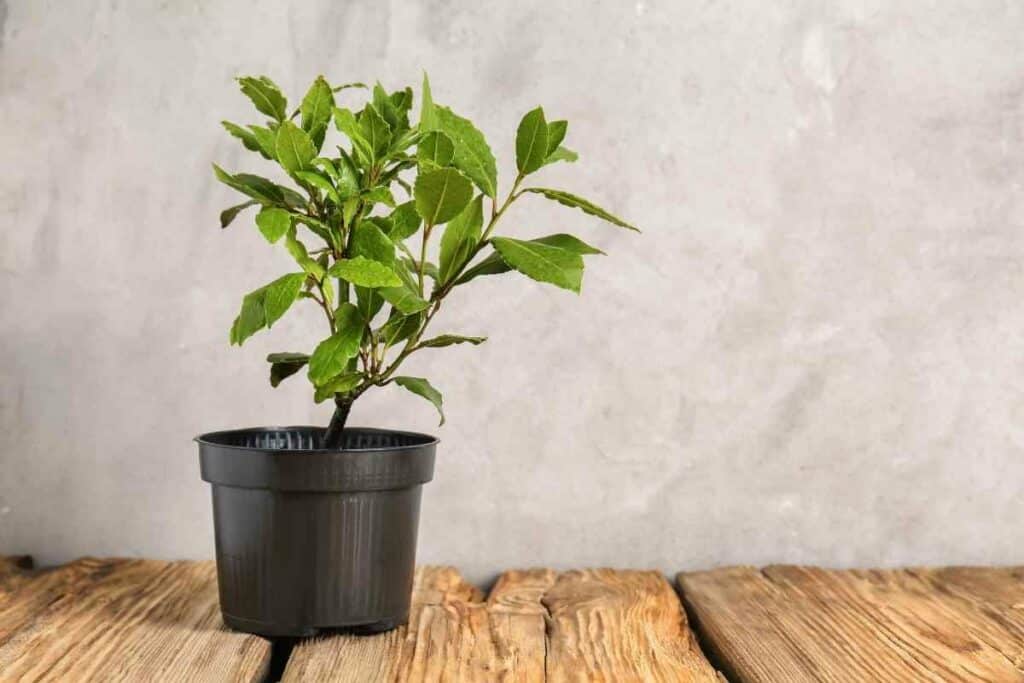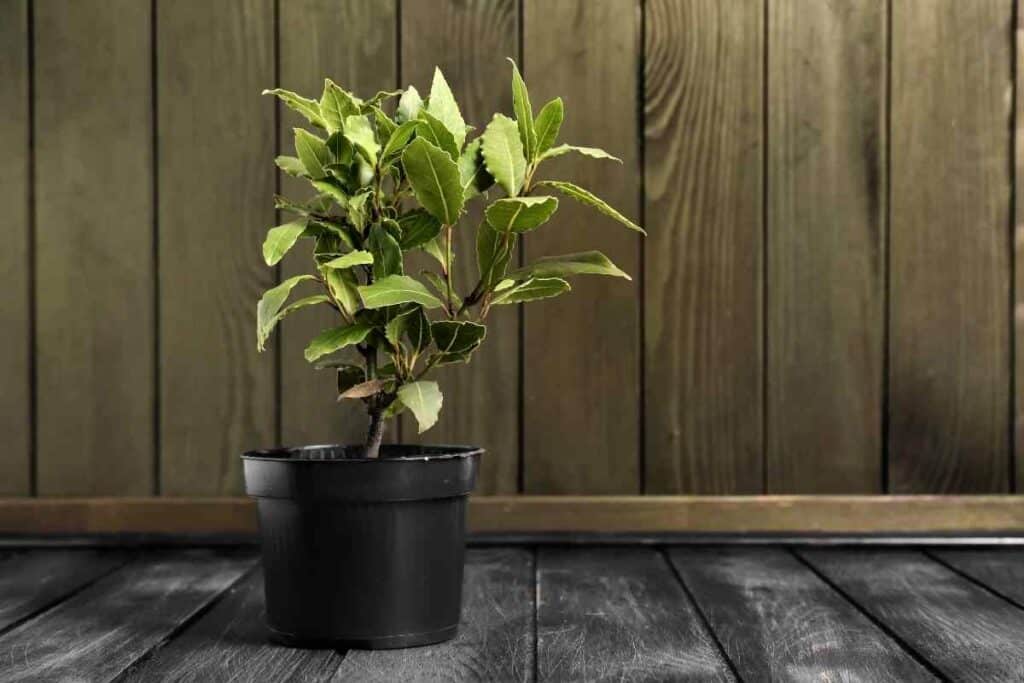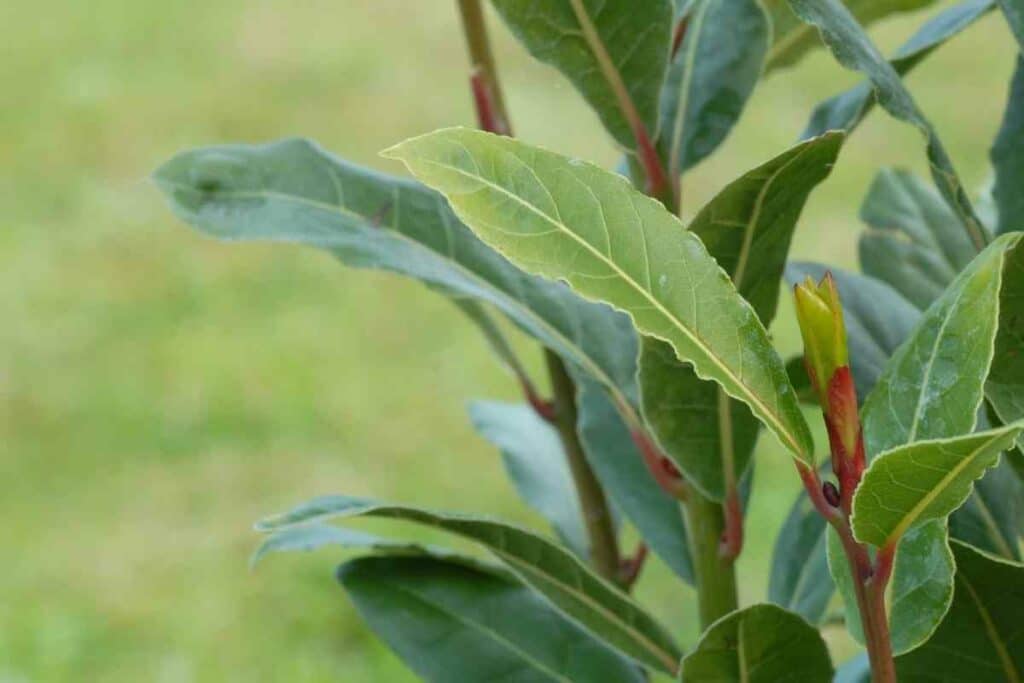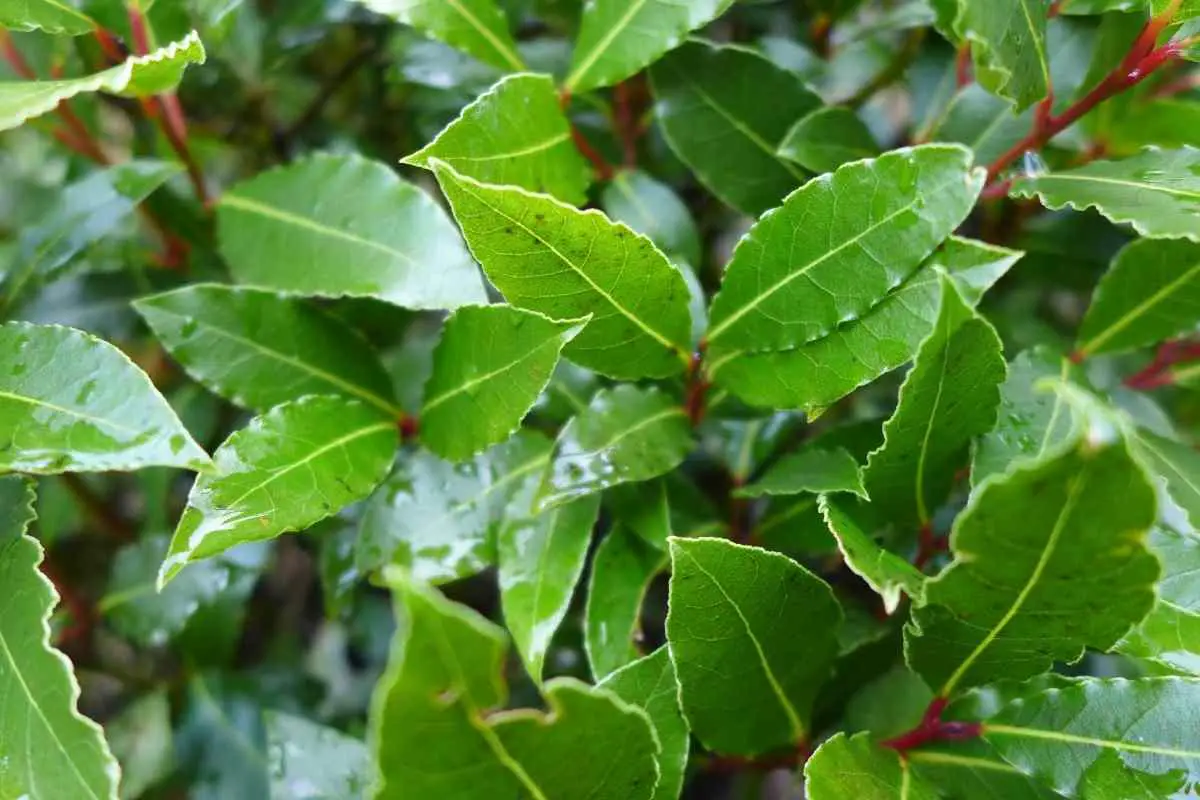Bay Laurel is an attractive plant but can also grow as a tree. It comes in several varieties and is most known for its leaves used in cooking.
However, it isn’t capable of living outside in every zone as it’s a native Mediterranean plant.
That makes it challenging for those in colder climates to keep on alive.
Learning how to grow Bay Laurel indoor resolves the problem of a cold winter that would kill the plant. It also is the answer to those who live in city apartments longing for some greenery. Bay Laurel is a great choice for indoor planting.
How Do You Get Started Growing Bay Laurel Indoors?
Most herb experts say:
- It’s best to buy a small plant that is already healthy and growing and start there with growing a Bay laurel indoor, although you can also grow it from seed.
- Put the plant in a fresh container that has plenty of drainage.
- The transfer container should be larger than the original but doesn’t have to be extremely big.
You can start smaller and transfer to larger ones as your Bay Laurel grows.
You can use fresh potting soil to supplement the new container but it doesn’t have to be a special kind. Bay Laurel can grow in almost any kind of soil.

One thing Bay Laurel needs is sunshine. People often move their laurel in and out as the weather changes.
Summer is a good time for it to be outside on a porch or deck while it makes a good indoor fall through spring.
Your Bay Laurel will continue needing sunshine even when it’s living indoors. It should be placed near a sunny window where it can get it.
The afternoon sun is best for this type of plant. The one thing to consider is to pick a spot where there aren’t any drafts or near appliances that give off heat.
Plants like those grown in the Mediterranean, including Bay Laurel, don’t need as much water as other plants. Most people say watering it once a week is fine.
Give enough time for the soil to dry out in between waterings.
Important: Remember the Bay Laurel has shallow roots so you need to keep a routine of watering as well as regularly monitoring as they can dry out quickly in dry indoor heat.
What About Humidity?
Low humidity in a home can present problems for a Bay Laurel bush or tree.
You can offset the plant drying out by putting it in a cooler part of the house.
It may shed a few leaves if it starts drying out. You can use the falling leaves in cooking.
Should I Fertilize a Bay Laurel Growing Indoors?
A Bay Laurel doesn’t need a lot of fertilizer because it grows slowly and most plants enter into a type of paused growth during winter even if it’s indoors.

Any plant grown in a container will need some fertilizer but mostly in the spring during the growing season.
The advice is to feed a container plant like the Bay Laurel in the spring and then in mid-summer. You should use a balanced organic fertilizer.
It is also helpful to retool the top two inches of soil in the spring with fertilizer as long as you don’t harm the roots.
How Tall Will Bay Laurel Grow Indoor?
Bay Laurel can grow into a tree but how tall it grows depends on how big the container is.
The plant can live as long as 20 years, like a tree, with little maintenance so it’s a popular container plant.
You can keep the size on the lower end of height by keeping it in a smaller container.
The container for growing a Bay Laurel indoor needs a broad base to avoid a tip over as the tree grows.
Pot Size: A 4 to 6-foot tree will do well in a 24-inch pot. Re-potting should only happen about every five years.
Should I Prune It?
Bay trees can grow up to 60 feet tall if left unpruned.
You should prune it to keep it to a size that works with your space.

Spring is a good time for pruning because it is starting a growth spurt then.
There isn’t a set amount to prune off your tree:
- Prune it enough to keep it the size you desire. Remember, the laurel will produce new heavy growth where you snip.
- You should prune off any damage, like die-back. Severely cases of damage call for you to cut the plant down to six inches tall. This allows more growth to sprout from the base.
When Can I Harvest the Leaves?
Adult plants will produce leaves that can be harvested anytime.
The plant should be at least two years old before you can harvest leaves.
Typically, you don’t need that many leaves for recipes but leaves can be easily dried for later use.
What Is So Good About Growing a Bay Laurel Indoors?
Besides the fact that Bay Laurel is easy to grow and maintain, this type of plant looks good year-round.
It has leaves that are glossy great that add beauty to any space.
It lives for many years without a lot of effort.
Another advantage of growing a bay bush or tree is that it is one plant that doesn’t attract pests.
The bay tree deters pests and that can be helpful to keep pests out of your home or apartment.
How Many Types of Bay Plants Are There?
There are four types of bay plants and all can be kept as plants or left to grow as trees.

They include:
- Laurus nobilis Angustifolia
- Laurus nobilis Aurea
- Laurus nobilis Undulata
- Laurus nobilis Saratoga
The differences are mostly in the shape and color of the leaves.
The Augustfolia has narrow willow leaves while the Aurea has yellow leaves that smell great.
The Undulata has rippled and wavy leaves, making this a good ornamental version and the Saratoga have light, rounded leaves and produces a good variety for seasoning too.
Conclusion
The Bay Laurel makes for a beautiful houseplant as it looks good both indoors as it does outside.
As long as you give it plenty of sun and keep it watered, it will display nicely for years.
